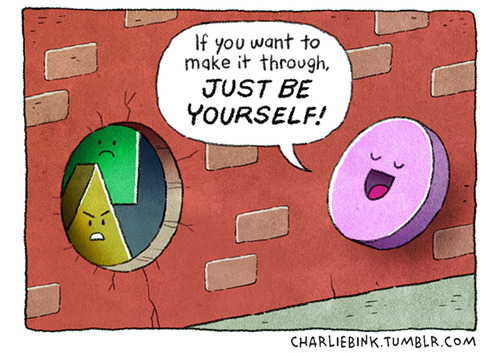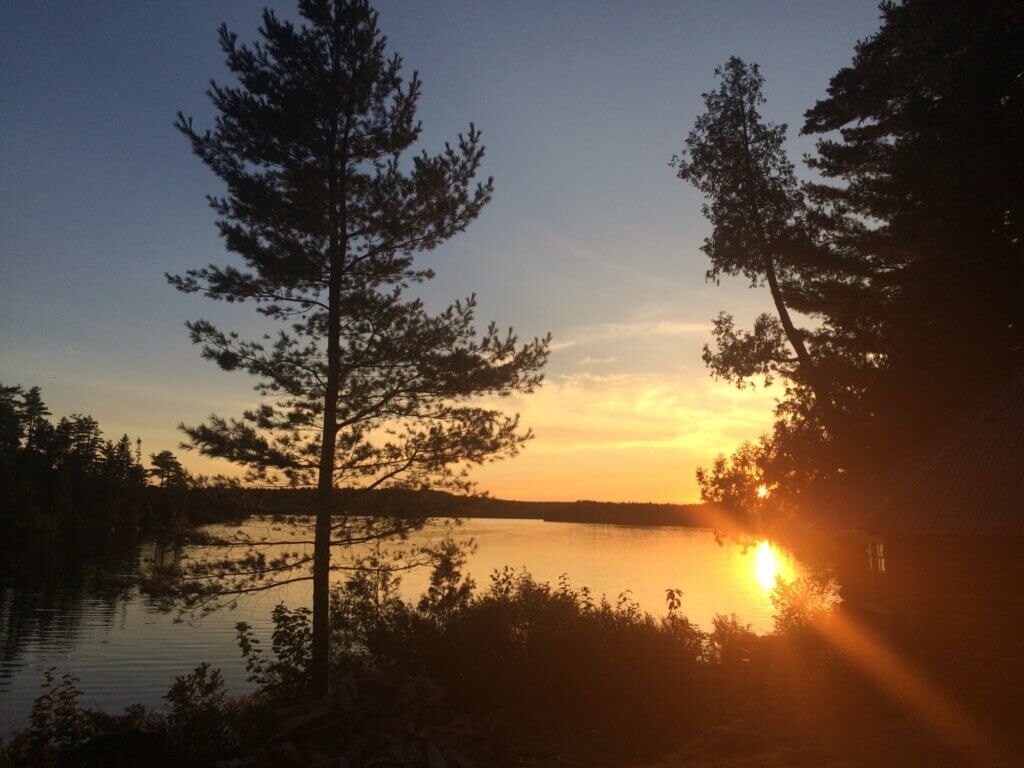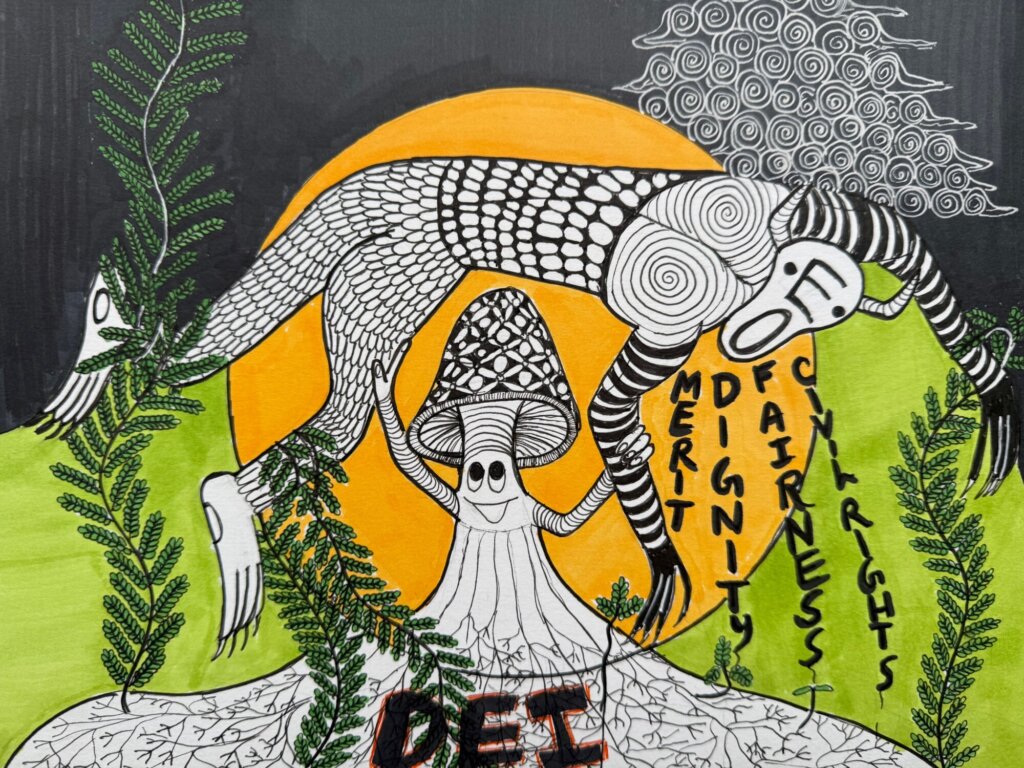Aparna
Published on
01 - 07 - 2016
Aparna
Published on
01 - 07 - 2016

 This post is dedicated to Vu Le at Nonprofit With Balls, whose bold nuggets of gold we can only aspire to produce, and who has inspired us to fearlessly “go there.”
This post is dedicated to Vu Le at Nonprofit With Balls, whose bold nuggets of gold we can only aspire to produce, and who has inspired us to fearlessly “go there.”
Disclaimer: For those of you engaging in cultural relevancy work without a working definition, this blog post is intended to call you in, not call you out.
“Cultural Relevancy” is a phrase that is being bandied about in the outdoor and environmental sector. But the more I hear it, the less I believe we’re all on the same page as to what it means. Try Googling “cultural relevancy,” and you’ll see a slew of definitions from the field of multicultural education, where the term originated.
In fact, it is through my work as a faculty member in multicultural education at Montana State University that I discovered the origins of the phrase. In the early 1990’s, Dr. Gloria Ladson-Billings defined the term “culturally relevant pedagogy” as a way of teaching student in which they (a) experience academic success; (b) develop and/or maintain cultural competence; and (c) develop a critical consciousness.
Somehow, the outdoor and environmental sector has co-opted “cultural relevancy” to refer to equity, inclusion, and diversity efforts. Don’t get me wrong. Cultural relevancy certainly has its place in the outdoor and environmental sector, but we first need to all be on the same page, because in the nuanced world of equity, inclusion, and diversity, ambiguity does a disservice to us all.
At the Avarna Group we lead with “equity, inclusion, and diversity” because those terms align most closely with our values; for us, cultural relevancy is a product of equity, inclusion, and diversity efforts. But we recognize the importance and prevalence of cultural relevancy in the environmental and outdoor world and have decided to utilize the following definition in our work:
Your organization is culturally relevant if what you do and how you do it is relevant to multicultural audiences.
What you do can encompass programming, advocacy, curriculum, or any of the substantive mission-driven pieces of your work. How you do it is your approach to the work, including your pedagogy (if you’re teaching), your advocacy mindset, whom you involve in your efforts, the language you use, your partnerships, and your messaging.
If your organization has expressed a desire to become more culturally relevant, but doesn’t have a working definition, try ours on for size. Armed with this working definition, it becomes much simpler to wade through the cornucopia of initiatives undertaken in the name of cultural relevancy to identify those that hit the mark, and those that fall far afield.
Cultural relevancy is NOT . . .
. . . changing your marketing message to reach populations of color, without changing what you do or how you do it. “Getting outside has been proven to reduce obesity and improve academic achievement” might be true, but if you’re just using that message as a pitch to families of color without actually making your spaces more welcoming, you’re not culturally relevant.
. . . pulling a “Chevy Nova” by altering your brand look and feel to be more appealing to diverse cultures, without changing what you do or how you do it. A Nova by any other name is still a Nova.
. . . inviting grassroots organizations that work with communities of color to tell you how to diversify your own ranks. Borrowing the analogy of an understandably frustrated colleague, grassroots groups are not “insulin pumps” prepared to inject people of color into the environmental movement.
. . . working with primarily underserved populations within a structure and programming that does not invite their input or collaboration.
. . . merely making your ranks or leadership more diverse without being willing to examine your organization’s culture, mission, vision, and values.
. . . blindly assuming that getting more young people of color into the wilderness is good because wilderness is good for everyone. (See #7 and #62 of “Stuff White People Like”)
. . . enlisting people of color to take on the lion’s share of the work of cultural relevancy without sharing the burden and accountability for this work. Many people of color are tired of navigating through their own experiences of alienation in a primarily white environment and movement, let alone being held responsible for helping people in power understand why equity and inclusion are important.
. . . “serving” people who are marginalized, disadvantaged or underrepresented; that’s paternalism.
. . . just about people of color. It’s about women, the disabled, veterans, the LGBTQ community, and everyone else who is underrepresented in our spaces and not engaged by our efforts.
. . . tweaking a job description or posting it on a POC Facebook page to attract more women and people of color. That’s one tiny step, but not a solution.
. . . engaging in technical “best practices” without doing the adaptive work.
. . . assuming that the diverse tapestry or mosaic of our country is not participating in environmentalism or the outdoors just because they are not engaging in the way we imagine they should: solitary escapes and solo backpacking trips.
. . . hiring “Diversity and Inclusion Directors” who are then saddled with trying to find funding to pay for their own important efforts (or worse, their jobs.)
At this point, you’re probably either, on the one hand, angry, resentful, ashamed, or guilty, or, on the other hand, shouting “tell it, sister!” or “about time!” or something along those lines. Either way, let us be clear. This work is bigger than any one of us, and our collective failings are not due to any one organization, person, or leader, but due to a system in which we are floundering without a North Star to look to.
But wait, there is good news! Many of you are engaging in authentic cultural relevancy efforts.
What do real cultural relevancy efforts look like (at least, to us)?
Cultural relevancy IS . . .
. . . reallocating your budget to prioritize equity, inclusion, and diversity over other aspects of operations, rather than relying on grants and the goodwill of funders.
. . . making equity, inclusion, and diversity a strategic priority.
. . . engaging with (not “serving”) communities who are marginalized, disadvantaged, or underrepresented in our spaces in meaningful ways that honor the true meaning of “partnership” (remember that sympathy and charity are not the same as empathy and active two-way engagement).
. . . talking about cultural relevancy work not just as a numbers game.
. . . being willing to engage in introspection and potentially change your mission, vision, values, and programs to be more relevant to the communities you want to engage.
. . . eschewing traditional notions of preservation and conservation—which have historically silenced the voices, buried the stories, and denied the experiences of many communities—and embracing a model of collaborative stewardship of nature.
. . . teaching to all cultures, and not just about them, by engaging in multiple types of culturally responsive teaching to reach every student (e.g., cooperative learning, reflection, sharing, teachable moments, discussion, etc.)
. . . making your messaging and lessons relevant to people’s lives by building rapport with them and finding out what is important to them.
. . . including multiple perspectives in your efforts, including the voices of indigenous people, women, and people of color. For example, when teaching about wilderness, you’re also teaching about the indigenous peoples who were forcibly removed to create “capital-W” Wilderness and about the African American community, to many of whom the wilderness historically did not represent a welcoming place.
. . . expanding your definition of outdoor engagement beyond traditional notions of backpacking in the backcountry, and including the host of ways people do connect with nature, including picnicking in a local park, playing soccer in a field, going fishing with family in a local water way, or cycling in a greenbelt.
. . . including the voices and participation of people directly and disproportionately impacted by environmental degradation in your campaigns and advocacy.
. . . being willing to explore your hidden biases, privilege, and ways in which you individually, your institution, and the industry you inhabit constantly (and unintentionally) disadvantage certain people over others.
. . . reexamining your programming locations to make them more psychically accessible for people who can’t travel to the backcountry, or if you can’t, making sure that the lessons people learn in remote locations can transfer to their own backyards.
. . . reexamining the length and type of your programming to include people who can’t take a month off for an expedition, who prefer to adventure with their families and friends, or who rely on technology to promote their passion for the outdoors.
. . . meeting people where they’re at and not expecting them to come to you.
. . . modifying your programs to better include and honor (and not just “accommodate”) the needs of many different cultures.
. . . plain and simple, just hard, hard work!
Dear Avarna community, We’re only four months into four years of this presidential administration, and the attacks on everything our…
Read full post about Staying the Course: On EOs, Education, ERGs, and SailingAvarna Community, It is with nearly all the emotions you might find in an emotions wheel that I am announcing…
Read full post about Farewell, AvarnaThe current administration’s anti-DEI Executive Orders have sparked varied responses in the nonprofit and private sectors—some organizations are defending DEI…
Read full post about DEI Jujitsu: Flipping the Backlash to Reframe Our Work

